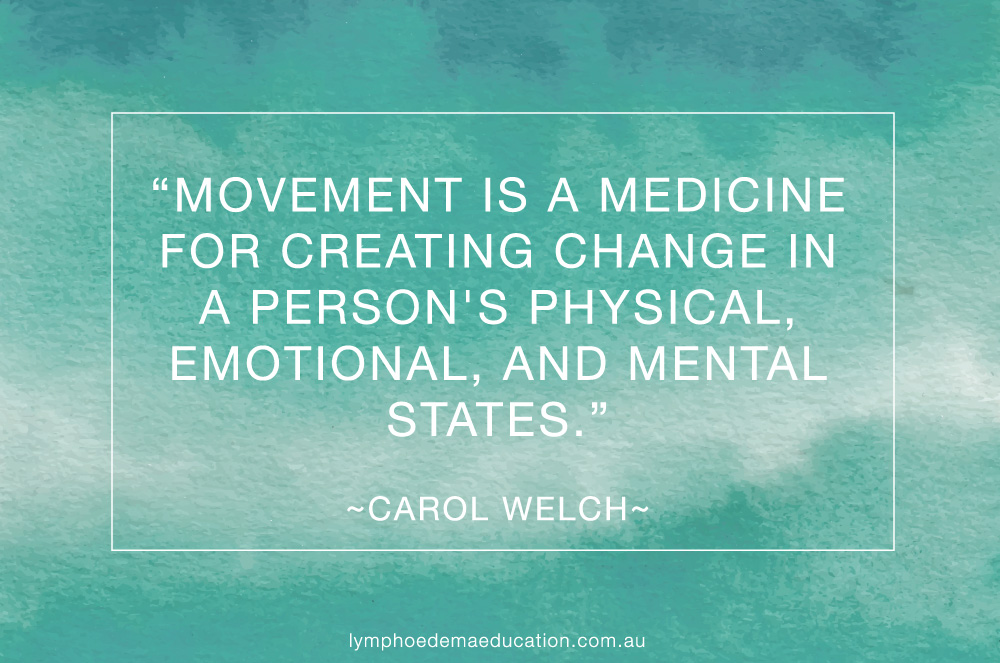Let’s get exercising

“Movement is a medicine for creating change in a person’s physical, emotional, and mental states.” Carol Welch
The benefits of exercising are well known and it’s our role to encourage our clients to get moving. For those that are having treatment for cancer there is increasing evidence that our clients can safely exercise even when they are actively having treatment. As health professionals it is important that we keep up to date with the latest research across the spectrum so we can inform our clients appropriately.
On the 10 May 2016 the ABC program Catalyst had an inspiring program title Exercise and Cancer. The opening line immediately caught my attention.
“By the time you hit my age, odds are you’ve been touched by cancer – either yourself, or someone close. By age 85, every second Australian will develop it. But what if I were to tell you there’s a medicine that may double your chance of survival and cause your own body to attack the cancer? It’s exercise, but not as you know it.”
Dr Jonica Newby interviewed Professor Robert Newton from the Exercise Medicine Research Institute at Edith Cowan University. Prof Newton and his team are undergoing research on the impact of exercise on cancer and its management.
As we know, the first line treatment for various forms of cancer can take 12 to 18 months to complete. Our clients perform exercises to regain range of movement and some strengthening exercises but this is not enough. If we only consider their fitness levels, and other forms of exercises, when they have completed their treatment they can be very deconditioned and sometimes afraid to resume or commence exercise programs.
Prof Newton’s idea is “Wouldn’t it be a way better, much more effective approach if we actually intervene with the exercise at the same time that they commence their therapy?” He also states
“We now have a growing number of research studies showing that if people hit a certain level of physical activity – which is relatively modest, to be honest – then they’ll more than double their chances of surviving their cancer. In other words, they halve their risk of dying.”
His team have developed a program, many would deem radical, that has their patients attending their in-house exercise clinic on the day of chemotherapy and radiotherapy and they exercise at the clinic 2 – 3 times per week. They have found the effects of treatment are reduced. Natalie, one of their patients, who was interviewed on the program said
“I felt better at the end of each session. I walked out with that extra bit of energy, little bit less fatigue. The nausea was curbed, or kept at the same level.”
Natalie often dragged herself in, but by the end of a session, she’d be feeling so much better than when she came in. And that’s a huge change in an HOUR, let alone over six months.
To hear the program in full go to http://www.abc.net.au/catalyst/stories/4459555.htm



